Email Channel
As an administrative user, you can create an Email asset. Webex Engage's email channel enables customers to send emails to the support mailbox. These emails are created as chats within Webex Engage. You can share the Email channel asset across different teams.
Add an email asset
To add an email asset, follow these steps:
- Login to Webex Engage.
- Click the Try new version button on the top-right corner of the application.
The Webex Engage React application will launch.
- Navigate to Assets> Channel assets.
- Click the Email channel tab.

- Click the + Email asset on the top-right corner of the Channel assets screen.
The following screen appears.
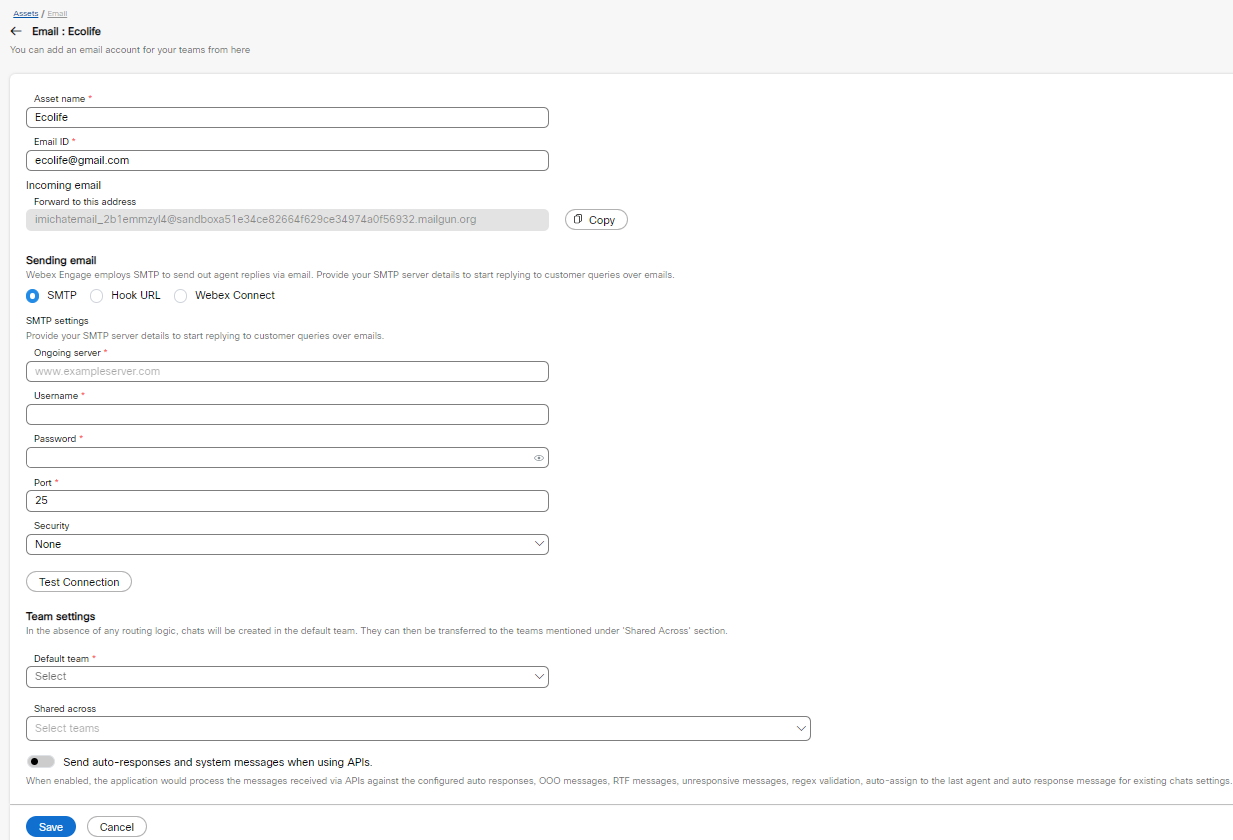
- Enter the Asset Name and Email ID.
- Copy the Incoming email address for further reference.
You can choose to send out an agent reply by the following methods on the Email channel:
- SMTP
- Hook URL
- Webex Connect
- If you select the SMTP radio button, the details of the respective settings will appear on the screen.
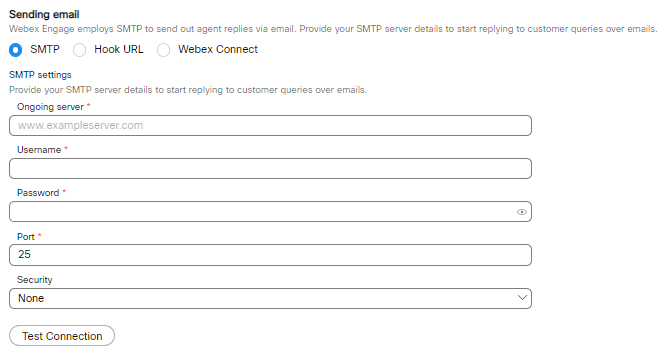
-
Enter the Ongoing server email id.
-
Enter Username and Password.
-
Select the port from the Port drop-down list.
-
Select the security from the Security drop-down list.
-
Test the connection by clicking the Test Connection button.
-
If you select the Hook URL radio button, the details of the respective settings will appear on the screen.
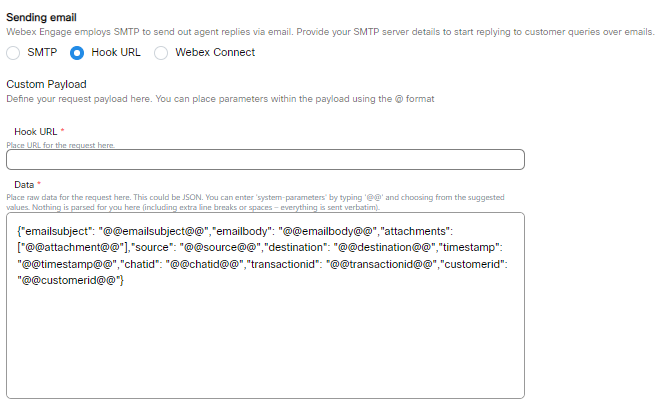
-
Enter the Hook URL and Data in the respective fields.
-
If you select the Webex Connect radio button, the details of the respective settings will appear on the screen.

- Enter the service key in the Service key field.
- Select Default Team and Shared Across Team from the respective drop-down list.
- Turn ON the Send auto-responses and system messages when using APIs toggle to process the messages received via APIs against the configured auto-responses, Out-of-Office (OOO) messages, Right to be Forgotten (RTF) messages, unresponsive messages, regex validation, auto-assign to the last agent, and auto-response message for existing chats settings.
- Click Save.
The success message appears on the screen.
Edit an Email asset
To edit an email asset, follow these steps:
- Login to Webex Engage.
- Click the Try new version button on the top-right corner of the application.
The Webex Engage React application will launch.
- Navigate to Assets> Channel assets.
- Click the Email channel tab.

- Click the Edit icon in the Actions column of a specific asset.
The following screen appears.

- Edit the required fields and click Save changes.
- Click Cancel to cancel the updated changes. The following pop-up window appears.

- Click the Continue without saving to cancel the saved updates.
- Click Keep editing to continue updating the asset.
Update priority
To update an Email asset's priority, follow these steps:
- Login to Webex Engage.
- Click the Try new version button on the top-right corner of the application.
The Webex Engage React application will launch. - Navigate to Assets> Channel assets.
- Click the Email channel tab.

- Click the Update priority icon in the Actions column of a specific asset.
The following pop-up window will appear on the screen.
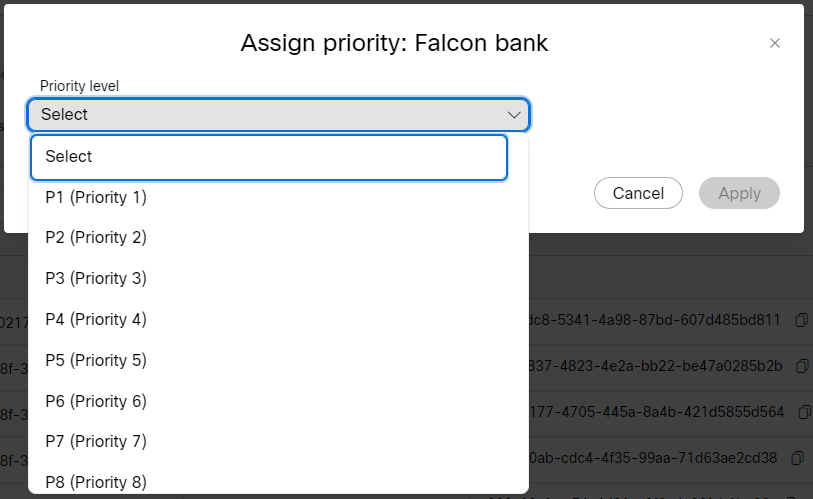
- Select a Priority from the Priority level drop-down and click Apply.
- If you select a priority other than P1, the Auto escalation rule(s) toggle appears.
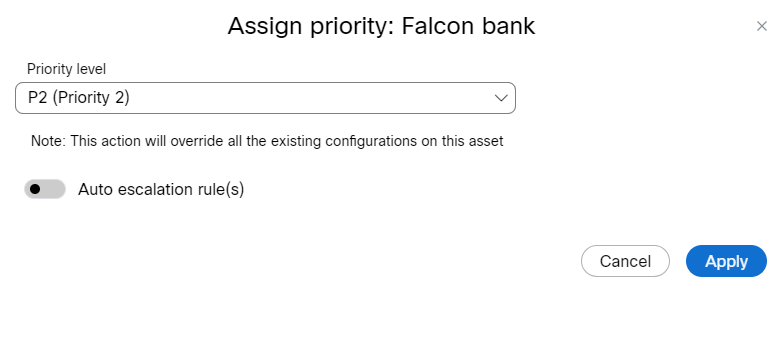
- If you turn ON the Auto escalation rules(s) toggle, the auto escalation configuration options will appear.
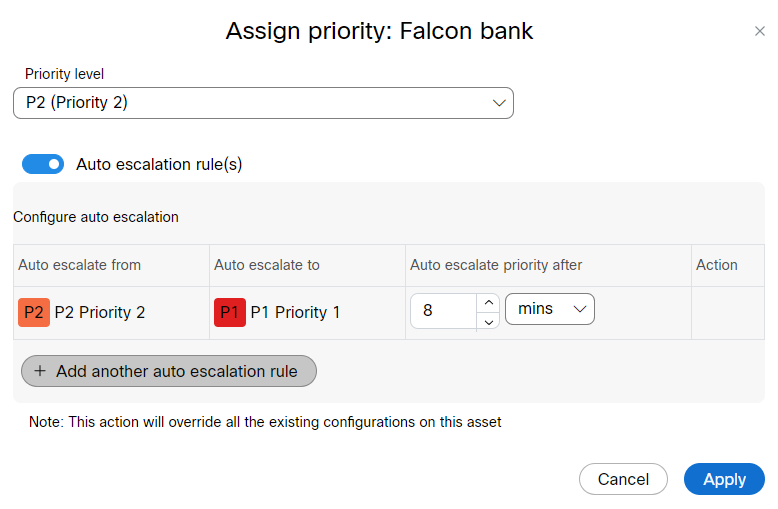
- Select the escalation time from the Auto escalate priority after drop-down in minutes and click Apply.
Note
- As per the chosen priority, you can add number of escalation rules.
Example: If you select priority as P2 then you can add one escalation rule. If you select priority as P3 then you can add two escalation rules, etc.- If you select priority as P1 then the Auto escalation toggle will be greyed and you cannot select it.
Search an email asset
To search for an email asset, follow these steps
- Login to Webex Engage.
- Click the Try new version button on the top-right corner of the application.
The Webex Engage React application will launch. - Navigate to Assets> Channel assets.
- Click the Email channel tab.

- Enter the search criterion in the Search input field above the table results.

The respective results will appear on the screen.
Customise display of table
The Customise Display helps you select a specific list of columns you want to preview in the table results.
To view customise table results, follow these steps:
- Click the Customise display drop-down on the top-right corner of the results table.

- Choose the required columns from the list by selecting the checkboxes adjacent to each column name.
You can instantly view the results on the screen by checking and unchecking the checkboxes.
Note
By default, Asset details and Actions columns are preselected and cannot be disabled.
Updated almost 2 years ago
